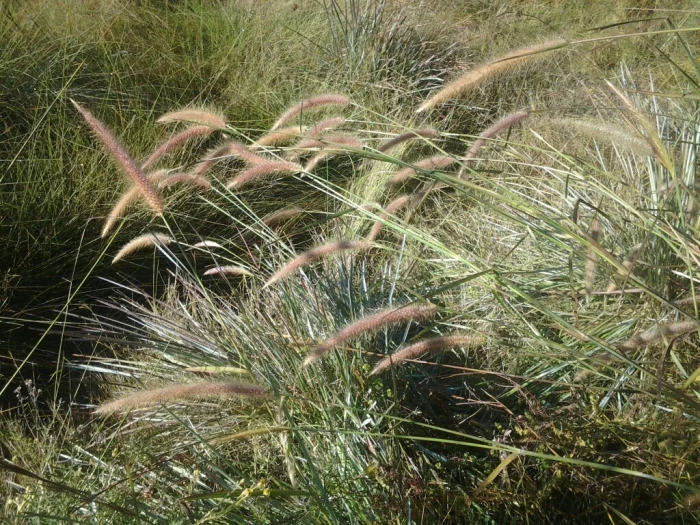Fox-Tail Fountain Grass
(Cenchrus setosus)
Fox-Tail Fountain Grass (Cenchrus setosus)
/
/

© National Geographic Okavango Wilderness Project
CC BY 4.0
Image By:
© National Geographic Okavango Wilderness Project
Recorded By:
Copyright:
CC BY 4.0
Copyright Notice:
Photo by: © National Geographic Okavango Wilderness Project | License Type: CC BY 4.0 | License URL: http://creativecommons.org/licenses/by/4.0/ | Uploader: intotheokavango | Publisher: iNaturalist |

























Estimated Native Range
Climate Requirements for Warren, Michigan
| This Plant | Your Site | Plant Suitability for Your Location | ||
|---|---|---|---|---|
| • Precipitation | 17" - 184" | 33" | Your precipitation may be insufficient for this plant. Irrigate N" / year. | Irrigate N" / year |
| • High Temp. | 68°F - 103°F | 84°F | Your summer temperatures are normal for this plant. | Excellent |
| • Low Temp. | 38°F - 74°F | 18°F | Your winter temperatures may be too cold for this plant | Too cold |
This plant should grow well at your location with about N inches per year (Y minutes per month) of irrigation.
Summary
Cenchrus setosus, commonly known as Fox-tail fountain grass, Bristle grass, or Bristly foxtail, is a perennial grass native to the arid and semi-arid regions of Africa and Asia. It thrives in open areas such as desert fringes, sandy plains, and waste places, where it is adapted to survive harsh, dry conditions. This grass typically reaches a height and width of 1.5-2 feet (0.46-0.6 meters), forming dense clumps. The inflorescences are bristly and resemble a fox’s tail, with yellow flowers that are quite showy when they bloom in the summer. The plant’s overall appearance is characterized by its upright, tufted habit and narrow, arching leaves.
Fox-tail fountain grass is valued for its drought tolerance and ornamental appeal, particularly its textured foliage and attractive flower spikes. It is used in xeriscaping, rock gardens, and as an accent plant in low-water landscapes. While it requires minimal maintenance, it is important to note that in some regions, Cenchrus setosus can become invasive, so gardeners should check local guidelines before planting. It thrives in full sun and is adaptable to a variety of soil types, including clay, loam, and sandy soils, provided they have medium to fast drainage. It has low water requirements once established, making it suitable for arid climates and water-conserving gardens.CC BY-SA 4.0
Fox-tail fountain grass is valued for its drought tolerance and ornamental appeal, particularly its textured foliage and attractive flower spikes. It is used in xeriscaping, rock gardens, and as an accent plant in low-water landscapes. While it requires minimal maintenance, it is important to note that in some regions, Cenchrus setosus can become invasive, so gardeners should check local guidelines before planting. It thrives in full sun and is adaptable to a variety of soil types, including clay, loam, and sandy soils, provided they have medium to fast drainage. It has low water requirements once established, making it suitable for arid climates and water-conserving gardens.CC BY-SA 4.0
Plant Description
- Plant Type: Grass
- Height: 1.5-2 feet
- Width: 1.5-2 feet
- Growth Rate: Rapid
- Flower Color: N/A
- Flowering Season: Summer
- Leaf Retention:
Growth Requirements
- Sun: Full Sun
- Water: Low
- Drainage: Fast, Medium
Common Uses
Drought Tolerant, Erosion Control, Low Maintenance
Natural Habitat
Arid and semi-arid regions, desert fringes, sandy plains
Other Names
Common Names: Bristle grass , Bristly foxtail
Scientific Names: Cenchrus setosus , Cenchrus polystachios subsp. setosus , Pennisetum parviflorum subsp. majus , Pennisetum polystachion subsp. setosum , Pennisetum polystachion subsp. viviparum , Pennisetum setosum
GBIF Accepted Name: Cenchrus setosus